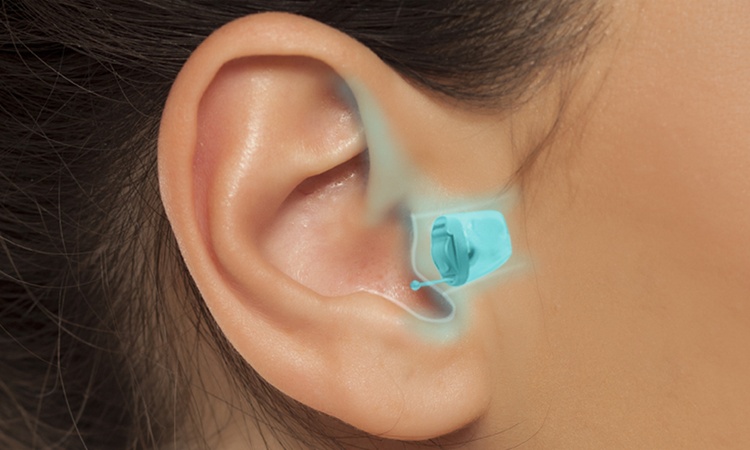Exploring Modern Hearing Support Options
Many people begin exploring hearing assistance options when they notice changes in how they experience everyday sounds. From newer designs to devices with smart features, this guide provides general information that may help individuals learn more about what’s available today.

What to Know About Newer Hearing Aid Technologies
Hearing aid technology has advanced dramatically in recent years, moving far beyond the bulky, beige devices many people picture. Modern hearing aids utilize digital sound processing, replacing the analog technology of previous generations. This digital revolution allows for more precise sound amplification and customization based on individual hearing needs.
Miniaturization has been a significant advancement, with many components shrinking to allow for smaller, more discreet designs. Microprocessors built into today’s hearing aids can distinguish between speech and background noise, automatically adjusting settings to optimize the listening experience. Many newer models also feature directional microphones that focus on sounds coming from in front of the wearer while reducing noise from other directions.
Connectivity has become a standard feature in premium models, with Bluetooth capabilities allowing hearing aids to connect directly to smartphones, televisions, and other electronic devices. This wireless functionality enables users to stream calls, music, and other audio directly to their hearing aids without additional accessories.
Key Differences Between Smart, Invisible, and Budget-Friendly Options
Smart hearing aids represent the premium tier of hearing technology. These devices connect to smartphones via dedicated apps, allowing users to adjust settings, create custom programs for different environments, and even track hearing health data. Some advanced models offer real-time language translation, fall detection, and health monitoring features. While offering impressive functionality, smart hearing aids typically come with higher price tags, ranging from $2,000 to $7,000 per pair.
Invisible or completely-in-canal (CIC) hearing aids prioritize discretion. These tiny devices fit deep in the ear canal, making them virtually undetectable to others. Their placement in the ear canal provides acoustic advantages and eliminates wind noise, but their small size can limit battery life and features. Due to their specialized design, invisible aids typically cost between $1,500 and $4,000 per pair.
Budget-friendly hearing aids offer basic amplification without many premium features. These devices generally use simpler technology and may lack directional microphones, noise reduction, or connectivity options. However, they provide essential hearing support at a more accessible price point, typically between $800 and $2,000 per pair. Over-the-counter hearing aids, newly available in the United States, offer even lower-cost options starting around $200.
Why Some Individuals Consider Refurbished Hearing Aids
Cost savings represents the primary motivation for considering refurbished hearing aids. New premium hearing aids can cost thousands of dollars per pair, and many insurance plans offer limited coverage. Refurbished models typically sell for 40-60% less than their new counterparts, making them an accessible option for budget-conscious consumers.
Refurbished hearing aids often come from individuals who upgraded to newer models or returned devices during trial periods. Reputable providers thoroughly clean, inspect, reprogram, and often replace components like microphone covers and tubing. Many refurbished aids also come with warranties, though typically shorter than those for new devices.
When considering refurbished hearing aids, it’s essential to verify the device’s history, including its age and prior use. Checking that the refurbisher follows proper sanitization protocols and offers post-purchase support is crucial. It’s also important to ensure the device can be programmed to your specific hearing profile and that replacement parts remain available for that model.
Overview of Commonly Available Features in Modern Hearing Aids
Noise reduction technology has become standard in most modern hearing aids. These systems identify and minimize background noise while preserving speech, making conversations clearer in challenging environments like restaurants or parties. More advanced models offer multiple levels of noise reduction that adjust automatically based on the environment.
Feedback suppression prevents the whistling sounds that plagued earlier hearing aid generations. This feature uses digital algorithms to detect and eliminate feedback before it becomes audible, allowing for more comfortable wear and higher volume settings when needed.
Rechargeable batteries have become increasingly common, eliminating the need for frequent battery changes. Most rechargeable hearing aids provide 24-30 hours of use per charge and can fully recharge in a specialized charging case within a few hours. While initially more expensive, rechargeable models save money and reduce waste over time.
Comparing Popular Hearing Aid Models and Providers
| Model | Provider | Key Features | Cost Estimation |
|---|---|---|---|
| Phonak Paradise | Phonak | Bluetooth connectivity, tap control, rechargeable | $2,800-$5,500 per pair |
| ReSound ONE | ReSound | Microphone in ear canal, smartphone app, rechargeable | $3,000-$5,800 per pair |
| Signia Silk X | Signia | Invisible design, instant fit, natural sound | $2,500-$4,200 per pair |
| Oticon More | Oticon | Brain-focused processing, ConnectClip accessory | $2,700-$5,300 per pair |
| Starkey Livio Edge AI | Starkey | AI features, fall detection, language translation | $3,200-$6,800 per pair |
| Eargo Neo HiFi | Eargo | Invisible, rechargeable, remote adjustments | $2,500-$2,950 per pair |
Prices, rates, or cost estimates mentioned in this article are based on the latest available information but may change over time. Independent research is advised before making financial decisions.
Finding the right hearing aid involves considering your specific hearing needs, lifestyle, aesthetic preferences, and budget. Modern hearing technology offers more options than ever before, from nearly invisible devices to sophisticated smart hearing systems. While premium features come with higher costs, many features that were once considered premium have become standard in mid-range models. Consulting with a hearing care professional can help determine which features will provide the most benefit for your specific hearing profile and daily activities.
This article is for informational purposes only and should not be considered medical advice. Please consult a qualified healthcare professional for personalized guidance and treatment.




